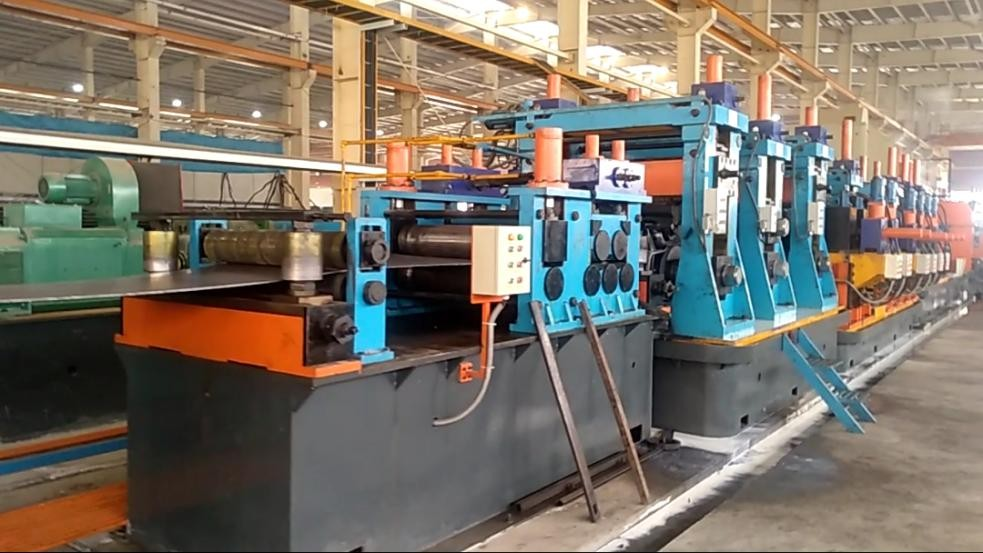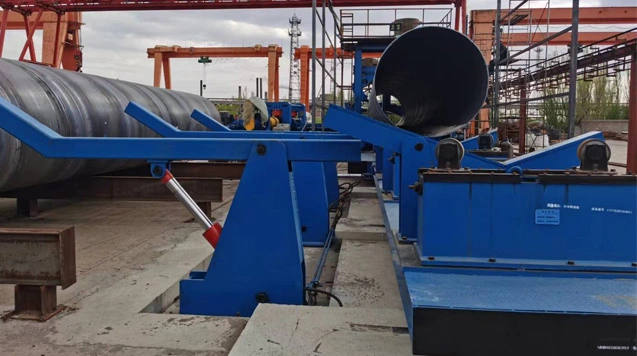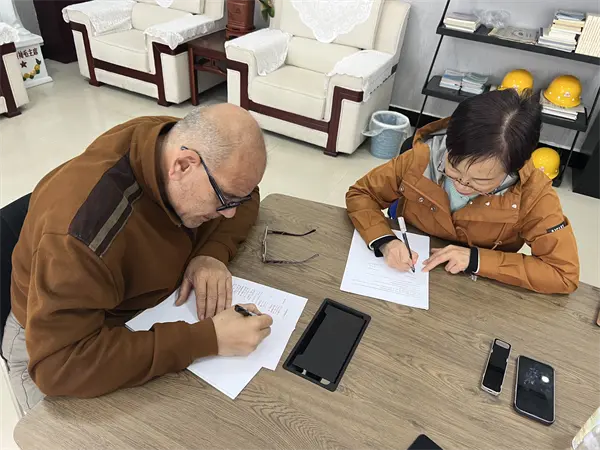×

Search
Electric Resistance Welded (ERW) pipes are a critical component in several industries, including construction, automotive, and oil & gas. These pipes are made by rolling metal and then welding it longitudinally across its length. The resulting product is known for its strength, durability, and versatility. TianxiangHao, a leading name in the pipe production line china, offers world-class ERW pipe solutions that meet international standards. But what exactly are ERW pipes, and how are they classified? Let's delve deeper into this topic.

When discussing the classification of ERW pipes, it is essential to note that they are segmented based on various factors like material, usage, and manufacturing process. Below are the primary types of ERW pipes:
Standard ERW pipes are produced by continuously rolling steel into a cylindrical shape and welding the seam using electric resistance. These pipes are typically used in structural and industrial applications.
Precision ERW pipes are manufactured to meet tight dimensional tolerances. These are used in applications where high accuracy is crucial, such as in the automotive industry. Advanced erw pipe mill is often employed to produce these pipes, ensuring the highest level of quality and uniformity.
HFI welded pipes are created using a high-frequency induction process that produces a clean, high-strength bond. These are often used in the oil and gas sector due to their reliability and high-pressure resistance.
These pipes are commonly used in construction for structural applications. They offer flexibility in design and are easier to join and assemble on-site.
These pipes are coated with zinc to increase their resistance to corrosion and rust, making them suitable for outdoor and marine applications.
Mild Steel (MS) pipes and ERW pipes are often compared, though they serve different purposes and have distinct characteristics.
ERW Pipes: Made using high-frequency electric resistance welding, ERW pipes can be created from various steel grades depending on the application.
MS Pipes: Typically composed of mild steel, which contains a higher amount of carbon, making them simpler and cheaper but less resistant to corrosion.
ERW Pipes: Formed by rolling metal sheets and welding them longitudinally using electric resistance. The process ensures a smoother finish and greater uniformity.
MS Pipes: Generally produced by rolling the steel into shape without the specific welding methods applied in ERW pipe production.
ERW Pipes: Used in critical applications like water and gas transportation, structural support, and scaffolding.
MS Pipes: Commonly found in less demanding applications such as fencing, furniture, and basic structural projects.
Continuous Weld (CW) pipes and ERW pipes may sound similar but they are fundamentally different in their manufacturing processes and applications.
ERW Pipes: Created using high-frequency electric resistance welding on cold or hot rolled steel. This results in a more precise and cleaner weld.
CW Pipes: Produced using a continuous welding process without the application of high-frequency currents. Though simpler, this method is less precise than the ERW method.
ERW Pipes: High consistency and quality control are maintained throughout the process, making these pipes suitable for high-pressure applications.
CW Pipes: Often less consistent due to the simplicity of the welding process, making them more suitable for low-pressure applications.
ERW Pipes: Used in a variety of industrial sectors including oil, gas, and construction where reliability and robustness are critical.
CW Pipes: More likely to be used in general plumbing, water transportation, and other non-critical applications.
ERW pipes are indispensable in multiple industries due to their strength, durability, and versatility. By understanding the different types of ERW pipes and how they compare with MS and CW pipes, stakeholders can make informed decisions about their application requirements. TianxiangHao, a renowned china pipe production line supplier, continues to excel in producing high-quality ERW pipes through state-of-the-art erw pipe mills. The future of piping solutions is robust, owing to continuous advancements in the manufacturing processes and materials used in ERW pipes.
Large Diameter Spiral Welded Pipe Production Line
Small Diameter Spiral Welded Pipe Production Line
Heavy Duty Spiral Welded Pipe Production Line
Thin Wall Spiral Welded Pipe Production Line
Stainless Steel Spiral Welded Pipe Production Line
Hydrostatic Pressure Testing Machine for Large Diameter Pipe
Hydrostatic Pressure Testing Machine for Small Diameter Pipe
Hydrostatic Pressure Testing Machine for Ultra High Pressure Steel Pipe
Chamfering Machine for Large Diameter Steel Pipe End
Chamfering Machine for Small Diameter Steel Pipe End
Double Station Chamfering Machine for Steel Pipe
Automatic Steel Pipe Chamfering Machine
High Frenquency Welded Pipe Production Line for Large Diameter Pipe
High Frenquency Welded Pipe Production Line for Small Diameter Pipe
Steel Pipe Conveyor
Steel Pipe Rotating Roller Table
Steel Pipe Puller
Steel Pipe Dropper
Steel Pipe Storage Rack
3PE Anti-corrosion Steel Pipe Production Line
Plastic Coated Steel Pipe Anti-Corrosion Production Line
Polyethylene (PE) Insulated Steel Pipe Production Line

Quick Links
Address
Tel
+86-0317-6213222Quick Links
Address
South Industrial Development Zone, Yanshan County, Cangzhou City, Hebei Province
Phone
+86-0317-6213222

_20250326101307.webp)